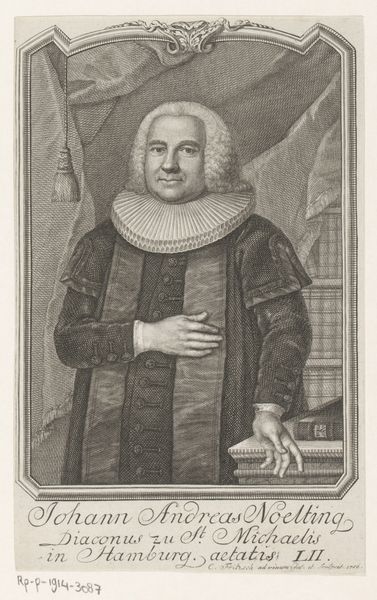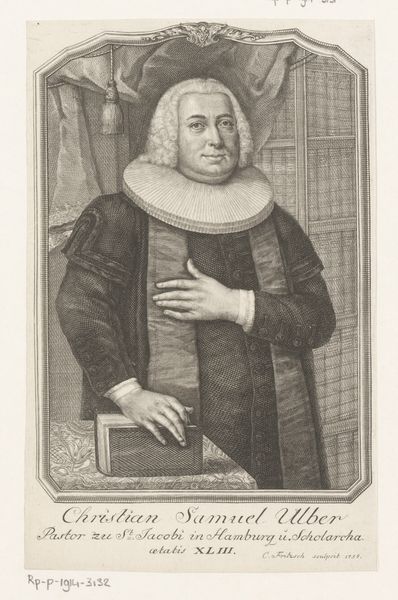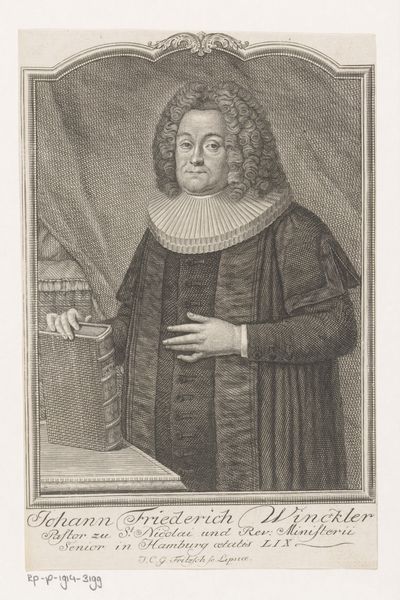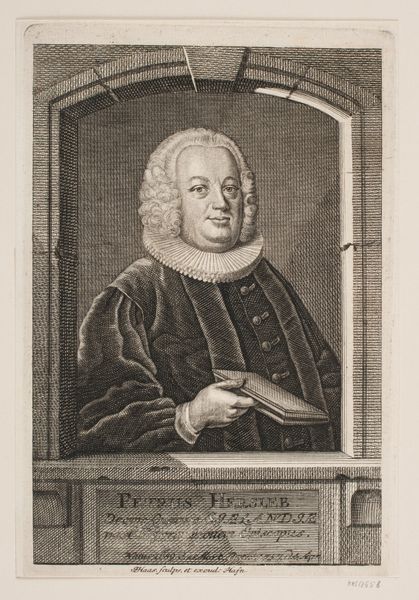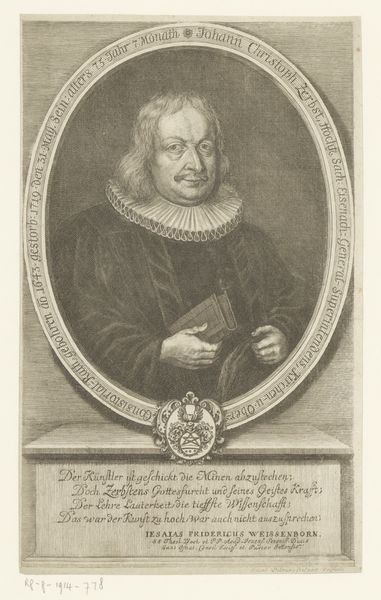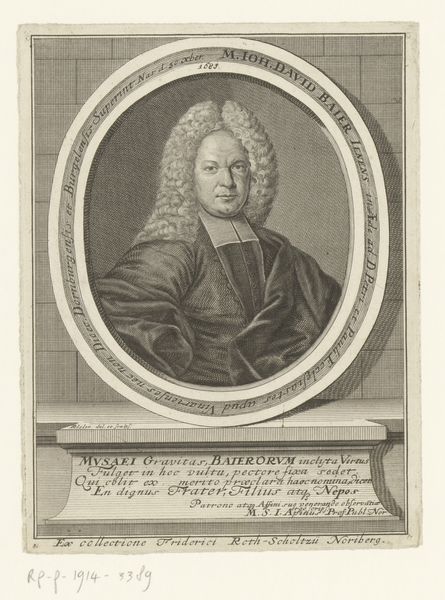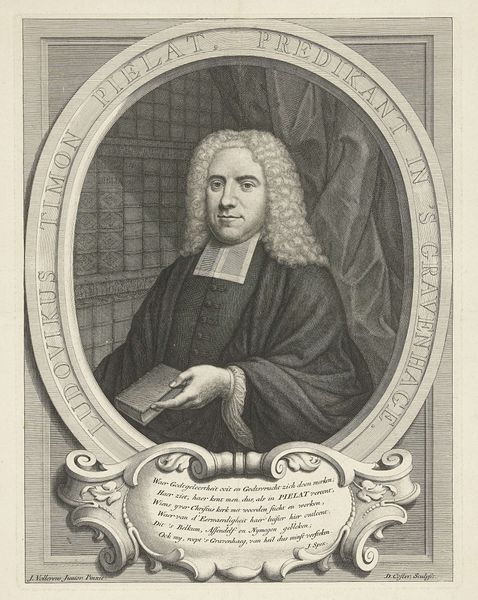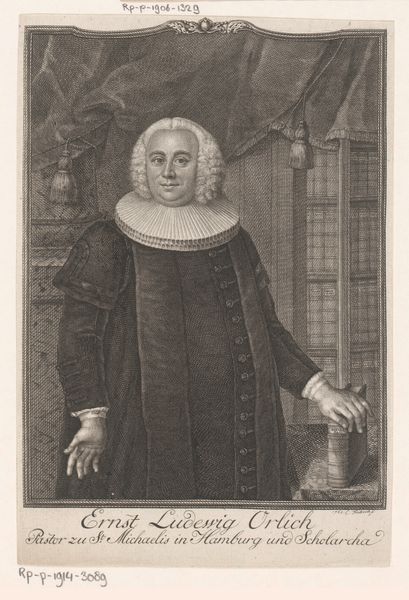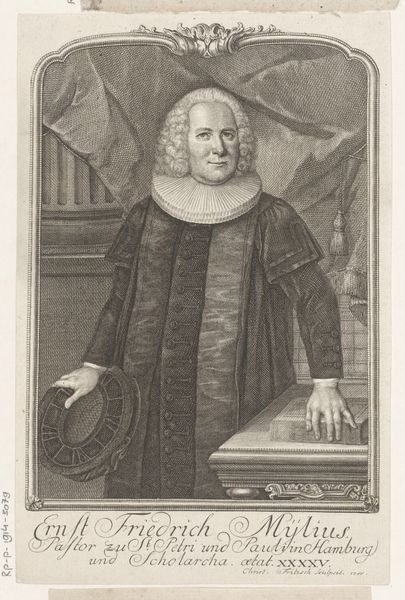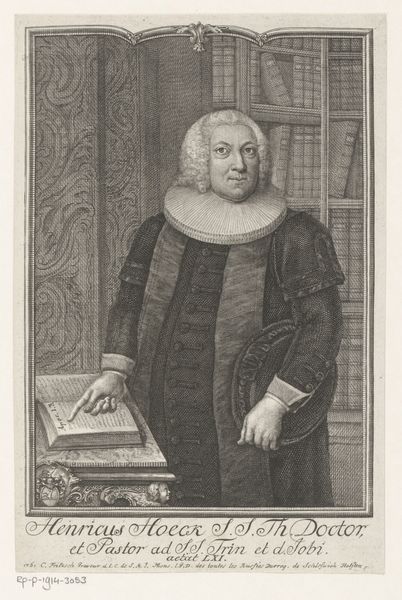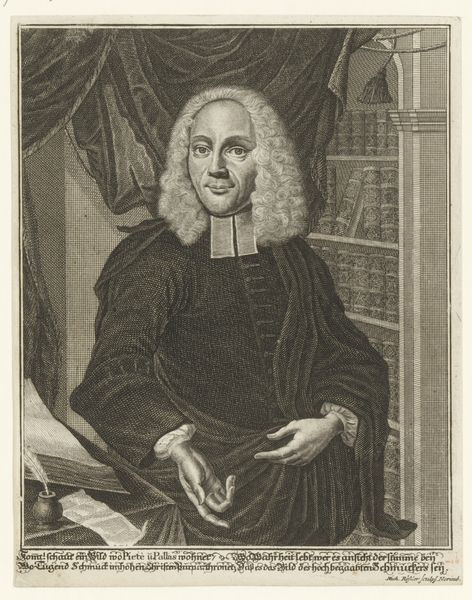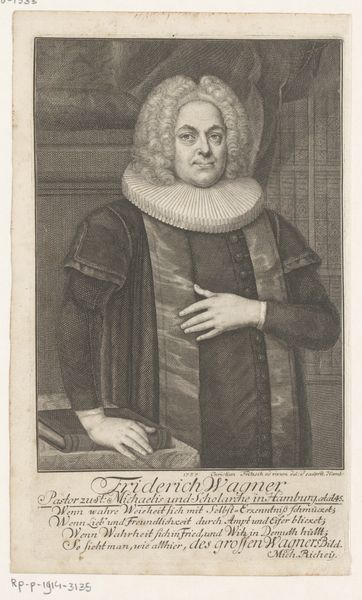
graphic-art, print, engraving
#
portrait
#
graphic-art
#
baroque
# print
#
portrait reference
#
engraving
Dimensions: height 193 mm, width 129 mm
Copyright: Rijks Museum: Open Domain
Curator: This print is a portrait of Johann Peter Gericke at the age of 39, created in 1755 by Christian Fritzsch. The work is currently housed here at the Rijksmuseum. Editor: My immediate response is the striking contrast – the soft, almost delicate details of the face and the intricate wig, against the more severe, somber tones of the clothing and background. It speaks of a certain tension, doesn’t it? Curator: Absolutely, and consider the visual language it employs. The book he holds suggests knowledge and scholarship, perhaps divine knowledge, while his hand gesture conveys either a sense of benediction or, potentially, a discreet acknowledgement. The ruff is another emblem of status in baroque era portraits. Editor: And the frame within a frame – the ornate border further isolating him, creating a sense of distance, even in his role within the church, which is supposed to be the welcoming hand to everyone. Curator: Think of portraiture in the Baroque era as constructing very specific visual narratives, reinforcing societal structures, especially around the church as this image clearly shows. We look at the portrait to gain some understanding, in the visual vernacular of that era, about how the subject wished to be seen, perceived, and ultimately, remembered. It isn’t really an individual, per se. Editor: Which begs the question: whose gaze are we fulfilling in this portrait, beyond just Gericke's? Is this image merely about him as an individual, or is it functioning to uphold a broader hierarchical system in which religion served as cultural glue? Curator: It functions simultaneously on multiple levels. Individuality expressed within rigid structural parameters. Fritzsch expertly uses line and shadow to give a sense of Gericke's inner character, but always within a framework designed to emphasize status. Editor: Right. The soft gradation of light does make him look very human, while his attire firmly situates him within the religious structure, almost acting as a signifier for his socio-political power at that time. I still see conflict, even a very slight unease, maybe stemming from a person being very aware of a huge crisis that might undermine what he represents. Curator: In that way, even the most straightforward seeming artwork is a dense, multilayered document. Editor: A constant reminder to question, and not to passively consume visual history.
Comments
No comments
Be the first to comment and join the conversation on the ultimate creative platform.
